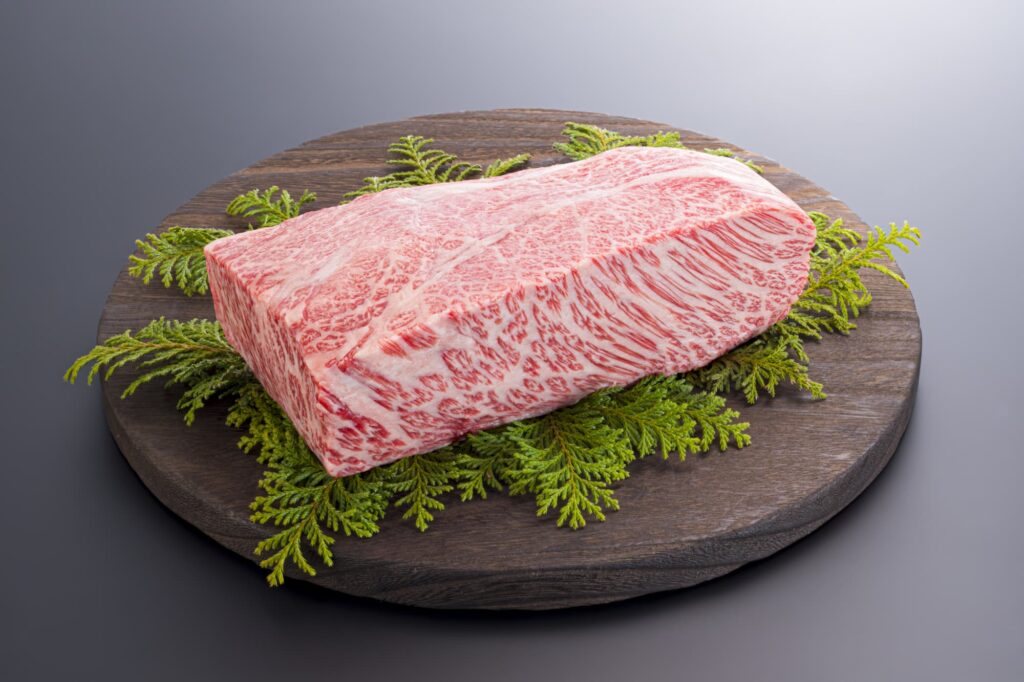[ad_1]
Japan is once again hosting the Olympics. No, don’t worry – it’s not another iteration of the dreadful sports event that drew such fire last time. This Olympics pits cow against cow to determine which one will produce some of Japan’s best beef. Welcome, ladies and gentlemen, to the Wagyu Olympics.
What is wagyu?
Most people outside of Japan probably just think of wagyu as “Japanese beef”. The actual definition is more precise.
Wagyu is different than nationally produced beef, a.k.a. kokusangyuu (国産牛). Nationally produced beef is beef produced domestically predominantly from Holstein cows (but also occasionally from Anguses and Herefords).
By contrast, wagyu comes from four separate types of cows: Kurogewa (Japanese black cattle), Akagewa, Nihon Tankaku (Japanese shorthorn), and Mukakuwa (Japanese Polled). Over 90% of wagyu, however, comes from the Kurogewa. Kurogewa further separate into different subtypes, such as Matsusaka and Yonezawa, depending on the region where the cattle are raised.
Wagyu is renowned for its marbled texture and melt-in-your-mouth taste. That experience, however, comes at a cost: wagyu will put quite the dent in your pocketbook. Wagyu cattle are raised via a special care and feeding process to ensure proper fattening that takes both time and money
In this avid eater’s opinion, as an occasional treat, it’s worth the money. But it’s only worth buying if you’re sure of its origins. Perhaps the most famous of the Kurogewa varieties outside of Japan is that from Kobe (神戸牛; koubegyuu). It’s also one of the most controversial: most beef advertised as “Kobe beef” is, in fact, a cheaper substitute that never once touched grass in Hyogo Prefecture[2].
(Note that, at one time, all wagyu beef in the US was fradulent, as no Japanese producer was USDA certified. That’s no longer the case.)
That doesn’t mean that true wagyu is inaccessible outside of Japan, though. In fact, 2021 saw a 60% spike in export volume, the greatest in its history – mostly driven by demand for home consumption in the US[5]. Consumers just need to take care to verify that what they’re buying actually comes from one of Japan’s treasured wagyu prefectures.
The “Wagyu Olympics”: A once every five years phenomenon
Of course, whenever you call something “top-class”, there’s gonna be a competition to be the top of the top. And that’s where the National Wagyu Prize Competition (全国和牛能力共進会; zenkoku wagyuu nouryoku kyoushinkai) – affectionately called the Wagyu Olympics – comes in.
The competition kicked off on September 6th (today as of this writing) in Kagshima Prefecture’s Kirishima. The competition is held only once every five years. The location makes sense: Kagoshima is on the island of Kyushu, where some 45% of the country’s wagyu comes from[4].
Competitors include both professionals as well as students who have studied animal husbandry. This year’s event is expected to draw attendance from a record-setting 41 Japanese prefectures, who will be presenting some 440 heads of cattle. Competitors will be angling for various prizes, including the coveted Prime Minister’s Award.
Besides the competition to be the best beef in the land, there will also, of course, be plenty of opportunities for tasting. The competition will abound in barbecues and sampling stands.

A huge boost for Kagoshima tourism
The event is also predicted to be a welcome shot in the arm to Kagoshima’s economy. Experts expect that it’ll draw a whopping crowd of 290,000 people[3].
That’s actually not quite as good as the last competition, held in Miyagi Prefecture in 2017. That drew some 400,000 people and injected just short of $100 million USD into the local economy. Of course, the 2017 competition didn’t have to contend with a global pandemic. The event is predicted to bring close to USD $40 million to Kagoshima. After three years of minimal domestic tourism, there likely isn’t a prefecture that’d refuse that sum.
The Wagyu Olympics continues in Kirishima until October 10th.
What to read next
Sources
[1] 和牛と国産牛の違いは何?和牛の種類とその定義.
[2] The Real Reason Your Wagyu Beef Is Probably Fake. Mashed
[3] 29万人の来場見込み 和牛五輪メイン会場の霧島市ではグルメや観光をPR 鹿児島県. TBS News Dig
[4] 九州の和牛飼育、全国の半分 「王国」になった背景は… Nishinippon Shimbun
[5] 和牛輸出量、6割増で最高 金額も8割増. Nikkei
[6] Wagyu. Ministry of Agriculture, Forests and Fisheries
[ad_2]
Source link



